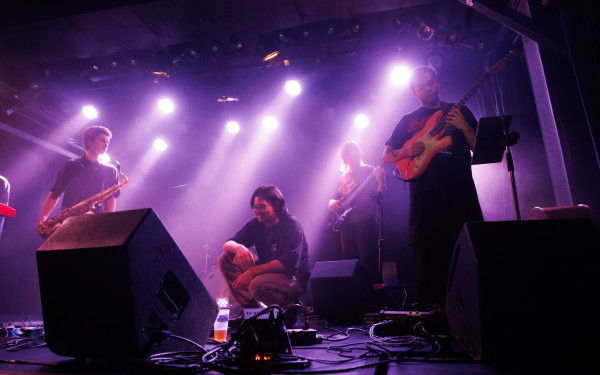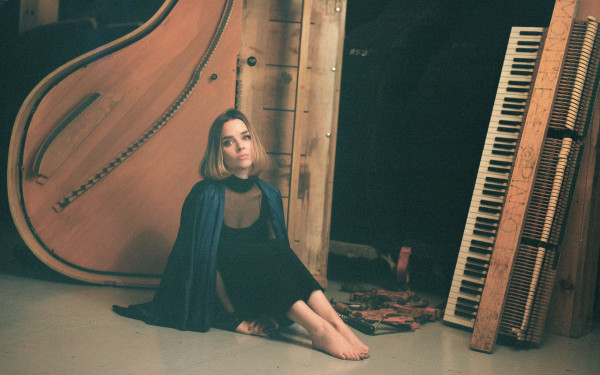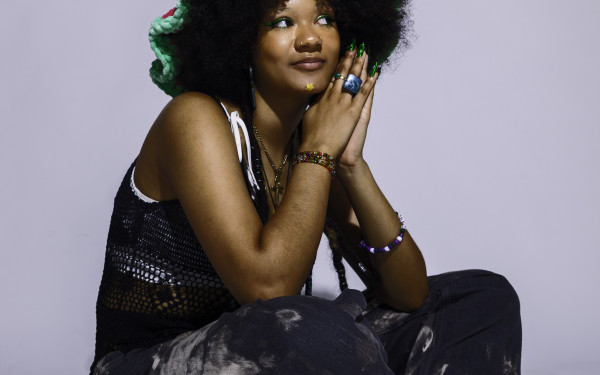The cultural mosaic of jazz
A microscopic view of the evolving jazz scene of Montreal
Every Wednesday evening on Montreal’s St. Denis St., local music venue Turbo Haüs is completely transformed.
Outside, a large congregation of young people are smoking, laughing and chatting. As you step inside, a fluorescent-lit space greets you, and it's a total immersion of the senses. Tonight is Growve Jam Night.
Musicians file on and off the stage. You look up and the person you’d just shared a quick laugh with outside is suddenly on stage, ripping a saxophone solo.
“This is a jam!” a voice exclaims through the speakers.
The musicians pull stank faces as they lock into a groove—something they’ve collaboratively been working toward, nodding and gesturing, communicating in an unspoken language.
“There's like a vocabulary; there's a language to jazz and improvisation, and the solos are definitely connected musically to that vocabulary,” explains Joshua Rager, pianist, music professor and chair of Concordia’s jazz studies program.
At the heart of Montreal's local music scene today is “the jam,” where musicians are invited to bring their instruments to venues and join the musical conversation.
Historically rooted in Montreal’s rich jazz culture, jams are inherently democratic, offering live, improvisational performances. They provide a unique opportunity for those interested in music to try something new, jump on stage and actively participate.
“The parallel that I sort of tell people is that playing music is a little bit like hanging out with your friends at a party,” Rager says, explaining how everybody contributes their own unique ideas and style.
It's this exchange, he says, that makes it such an exciting experience for the audience.
In the local scene, Growve was the first place where guitar player Mim Al began learning the art of improvisation—how to jam.
“Going into the jam world was completely surreal, ‘cause you're kind of just having a conversation among all these other instrumentalists,” Mim Al says. “When you're jamming, you're trying to talk some deep shit, you know, like, ‘Yeah, man, what is life?’”
Baron Tymas—a jazz guitarist, jazz professor and coordinator of the jazz studies program at Concordia—explains that the structure of jam sessions is flexible and open to interpretation, offering room for creative freedom rather than following rigid rules.
“You come up with ideas as a group that probably no one would have thought of on their own,” Tymas says.
There is something deeply interactive about watching improvisation unfold—it pulls the audience into the experience, flowing and grooving along with the musicians. It offers a glimpse into how earlier generations might have felt at their favourite jazz supper clubs.
The jazz scene once thrived with over 100 clubs in Montreal in the 1940s and ‘50s. However, live music has been in decline for the past 20 years, according to Rager. During its heyday, live performances were a primary source of entertainment, with countless supper clubs and dance venues at the centre of the nightlife scene.
Now, Rager says, “all of that kind of social structure around music has declined,” leaving only two remaining jazz clubs in the city: Diese Onze and Upstairs Jazz Bar & Grill.
Despite this shift, Montreal’s passion for jazz endures. Since its inception in 1980, Montreal’s International Jazz Festival has showcased a mix of renowned names, jazz legends and local artists for two music-packed weekends each year. As the festival’s tagline—“Jazz, the Montreal Way!”—suggests, the city has its own take on the genre.
“Montreal has a really strong respect for the cultures and the arts,” says Shayne Assouline, known also by his stage name, Shayne on Drums. Assouline played the festival for his third consecutive year this summer, an opportunity he says is a lifetime goal for many musicians from Montreal like himself.
Making ends meet as a jazz musician in the city may not be as feasible as it once was. Assouline is amongst the few who are able to still make a living from performing music. Though he says it's not really functional to make a living off just playing jazz these days, more possibility is available to those willing to expand beyond the genre into what he calls “jazz-adjacent genres,” like funk and hip hop.
“The sound of jazz in Quebec, you know it's kind of modern, it's a much freer approach to playing jazz and improvising. It's less traditional,” Rager says. According to him, modern Quebec jazz has a “much younger sound,” due in part to the high concentration of students from jazz programs at Concordia, McGill University and Université de Montréal.

Assouline is a former student of Rager. He now runs Growve, one of Canada’s most participated in weekly jam sessions, that draws from hip hop influences while embracing its origins.
“Sometimes we play popular songs, [...] and then we improvise on that popular music, and then we come back to the form of the song,” Assouline says. “It's entirely just about expression over these existing ideas.”
Though the roots of jazz run deep in Montreal, with renowned jazz pianists Oscar Peterson and Oliver Jones hailing from the city, the genre’s beginnings are rooted in the early Black culture of New Orleans, Louisiana, USA.
Jazz found its official expression by the 1800s, as enslaved people in New Orleans sought ways to preserve their African traditions in a marketplace that became known as Congo Square, Rager explains. The American Civil War then led to what Rager describes as “this huge amalgamation of cultures and music all in New Orleans.”
The origins of jazz in deep suffering are no coincidence, Rager explains, adding, “It's really about freedom and transforming suffering. Jazz is very much about democracy, with musicians playing equal roles in music creation.”
Tymas performs weekly with his students at the Upstairs Jazz Bar & Grill. Walking down the narrow steps into one of Montreal’s last jazz clubs is a very different experience than what you might get at a jam like Growve. The candle-lit underground bar, ironically named “Upstairs,” is a place to sit quietly with a drink—occasionally getting shushed if you’re speaking too loud—and listen to the smooth, collaborative conversation of jazz as local voices come together.
Though jazz in Montreal is different today than in the past, blending tradition with innovation, Assouline believes this evolution is essential.
“Art should push forward,” Assouline says, “drawing from the past and present to create something new.”
There is a certain soul that is, in a way, indescribable but resonant and felt in the communications among each of the interviewees. Something perhaps that cannot be conveyed through words, but rather the vibrational conversation that has drawn them to their passion—music. So here are some of their recommendations:
Shayne on Drums recommends Robert Glasper, who he says has found the perfect blend between jazz and Hip-Hop. He also recommends Sky Joel Ross, Marcus Gilmore, Emmet Cohen, Nate Smith, Christian McBride, Snarky Puppy, Ghost Notes, Hiatus Kaiyote.
Rager draws inspiration from: Sonny Rollins, Sonny Clark, and Brad Meldo.
Mim recommends Montreal based band Horrible People, Dusty Brass and Jay Wren.
This article originally appeared in Volume 45, Issue 5, published November 5, 2024.


_600_832_s.png)




_600_375_90_s_c1.jpg)